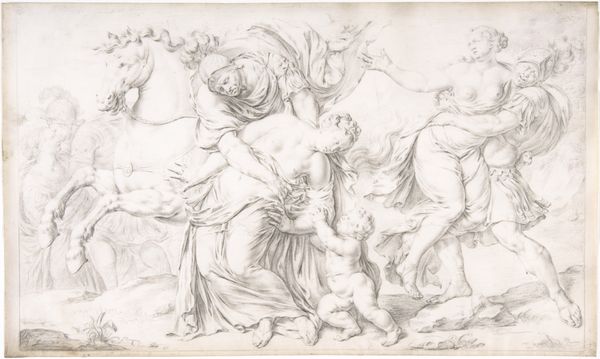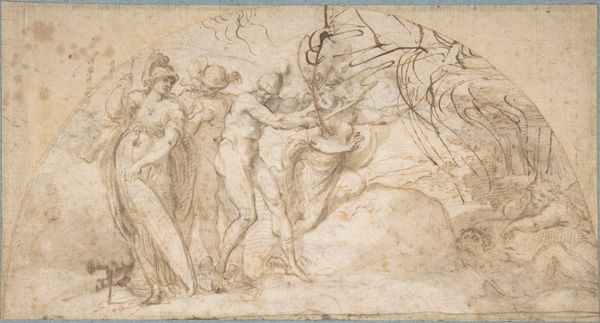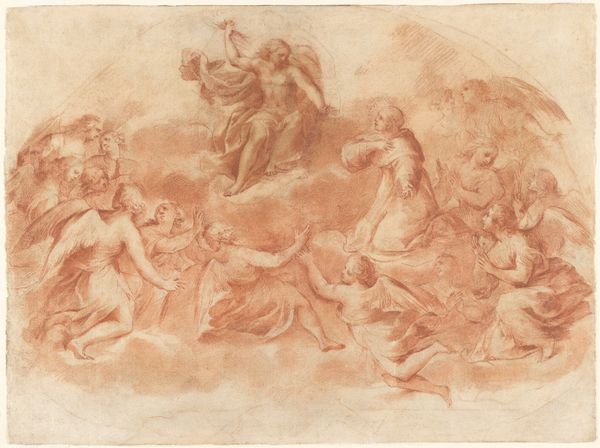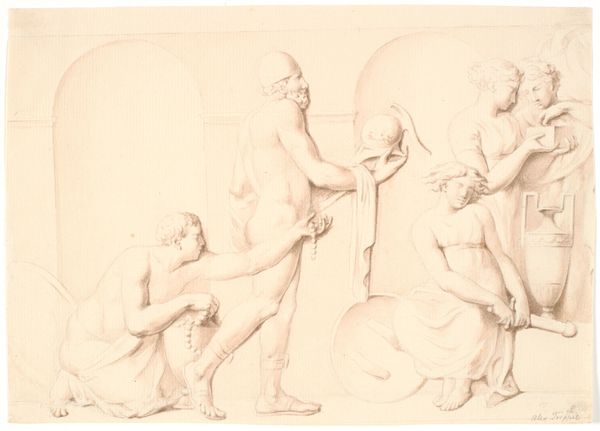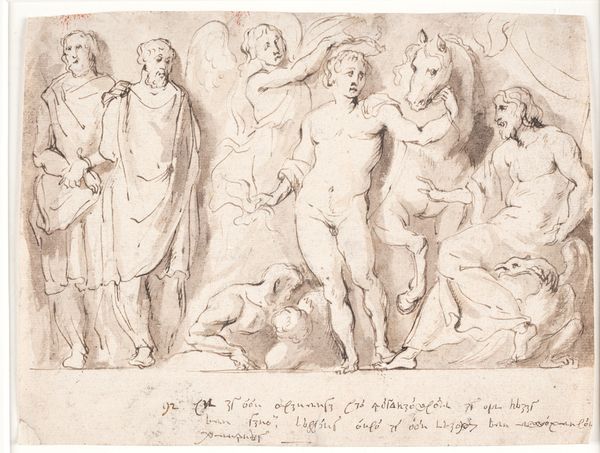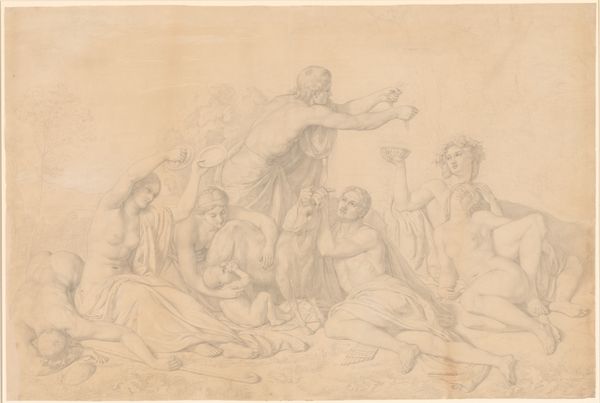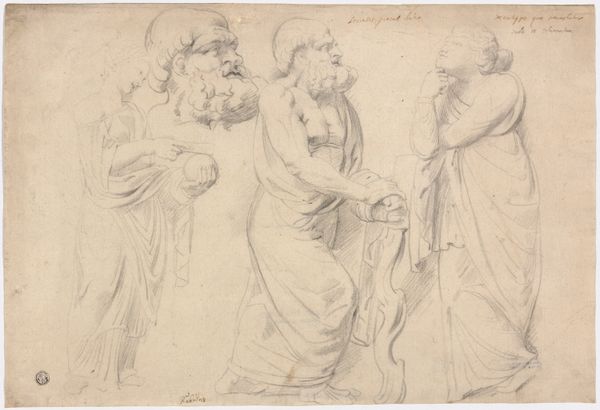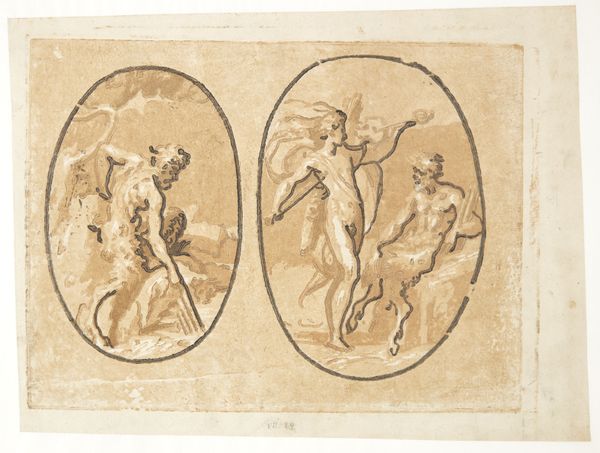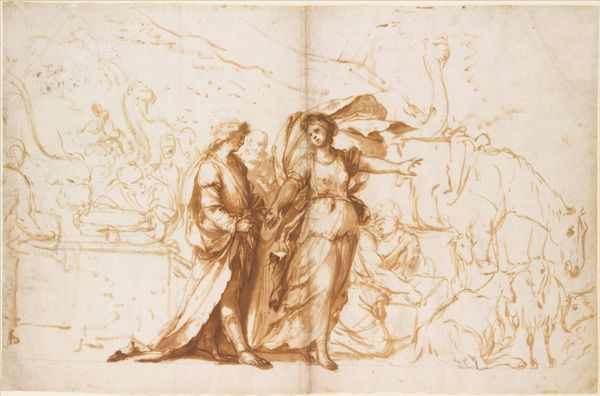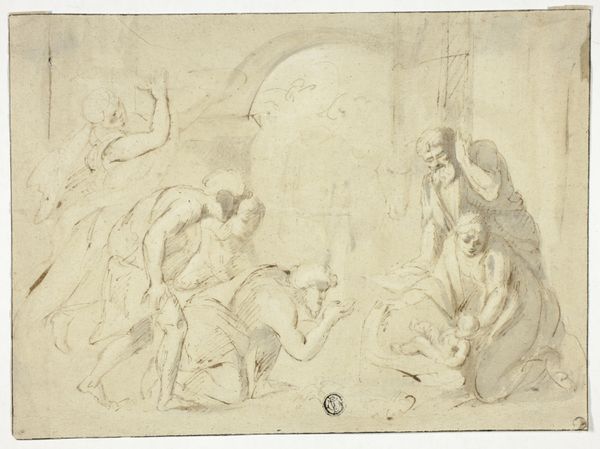
drawing, ink
#
drawing
#
narrative-art
#
baroque
#
ink painting
#
figuration
#
ink
#
history-painting
#
academic-art
Dimensions: 210 mm (height) x 269 mm (width) (bladmaal)
Curator: Here we have "The Rape of the Sabines," an ink drawing by Willem Panneels, likely created between 1628 and 1630. It’s currently housed here at the SMK. Editor: What strikes me immediately is the dynamism – a controlled chaos within that curving sheet of paper. The inkwork, though seemingly quick, gives such volume to the figures. Curator: Indeed. Panneels, a Flemish artist, worked in Rubens’ studio. This piece exemplifies academic art traditions prevalent at that time. He’s working within a history painting style here, a visual representation of the legendary abduction of Sabine women by the founders of Rome. These kinds of pieces helped consolidate cultural ideas and narratives for the ruling elites. Editor: The use of line is masterful. Notice how he employs hatching and cross-hatching to model the figures, creating a strong sense of three-dimensionality despite the absence of color. The almost frantic energy of the strokes mirrors the violence of the scene, doesn’t it? It definitely heightens the emotional intensity. Curator: Absolutely, and that intensity speaks volumes about the prevailing societal norms. "The Rape of the Sabines" wasn’t merely an historical depiction; it implicitly endorsed the patriarchy through visual storytelling. Images like this perpetuated an accepted, even celebrated, sense of domination. The scene becomes part of the legitimization of political power through gendered violence. Editor: So the composition itself plays a key part. We're drawn into a vortex of bodies, each figure reacting against and to another. Arms are flailing, legs twisting, all orchestrated to communicate struggle. Even in monochrome, the scene writhes. Curator: Exactly, that choreographed struggle served a function. Disseminating visual content like this through prints, paintings and tapestries helped propagate an ideology of empire built on narratives of conquest. That the story involved gendered and sexual violence reflects the power structures in which the elites held. Editor: Understanding these techniques allows us to see how Panneels, or by extension his patrons, framed the visual story through technical manipulation as much as choice of subject. By deconstructing such a drawing, its social implications reveal much beyond its surface aesthetic qualities. Curator: Looking closely helps to peel back the layers. Editor: Precisely. There's more than first meets the eye here.
Comments
No comments
Be the first to comment and join the conversation on the ultimate creative platform.
